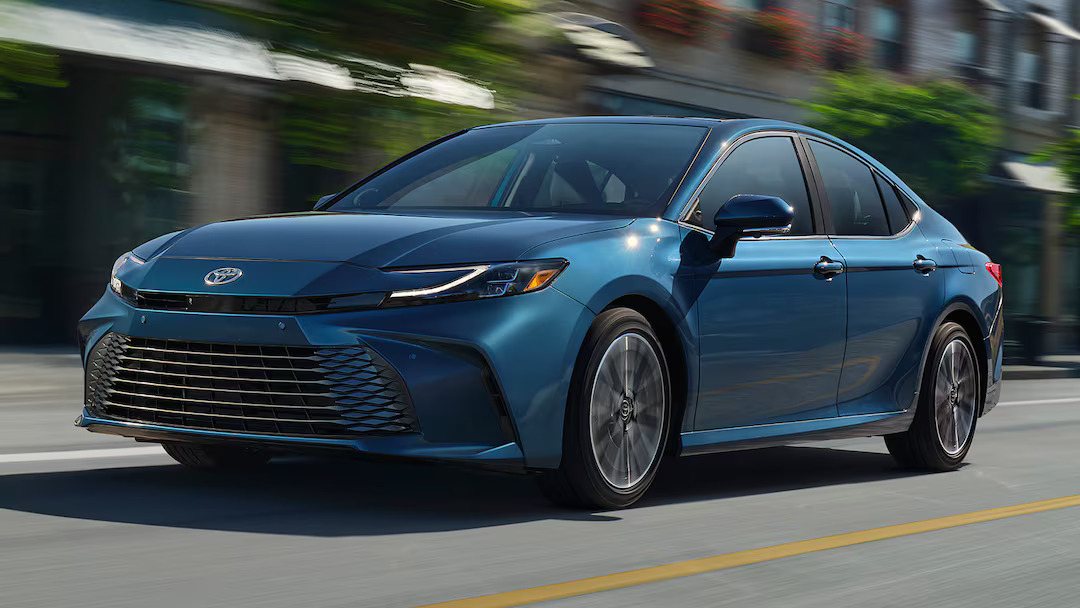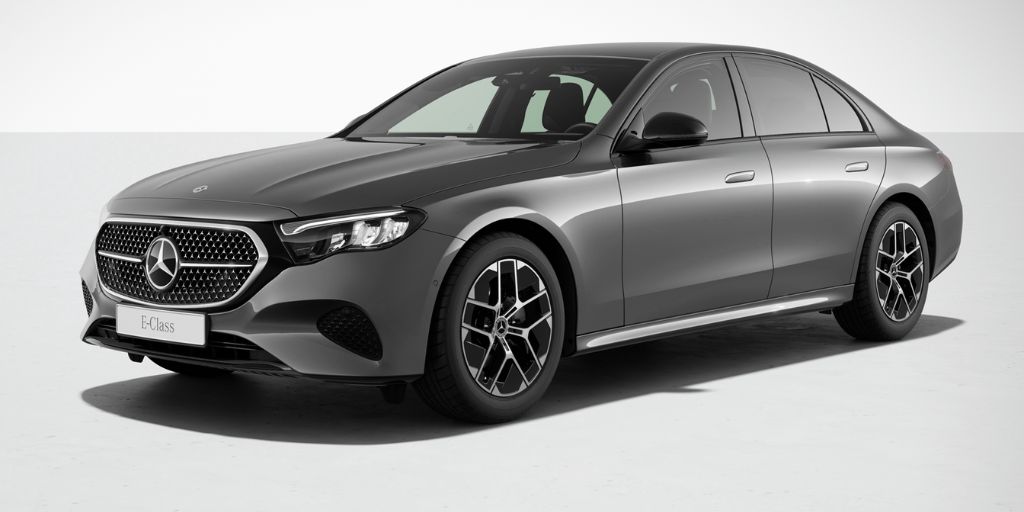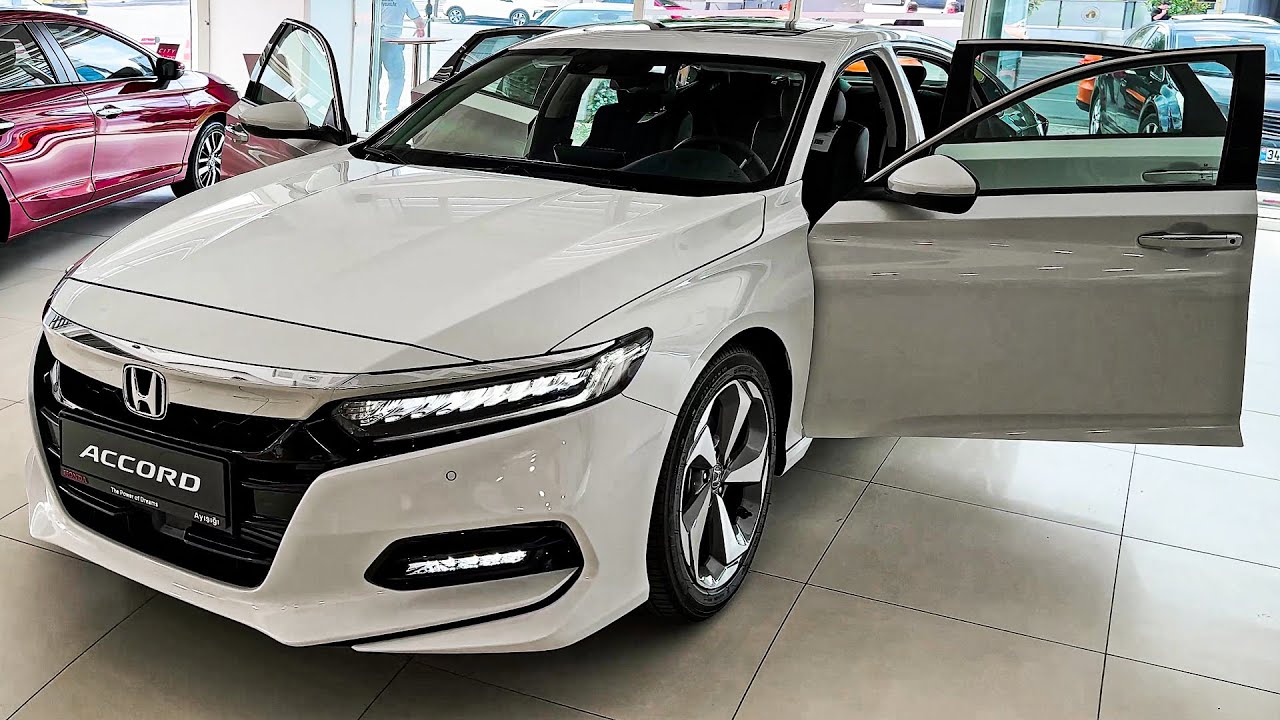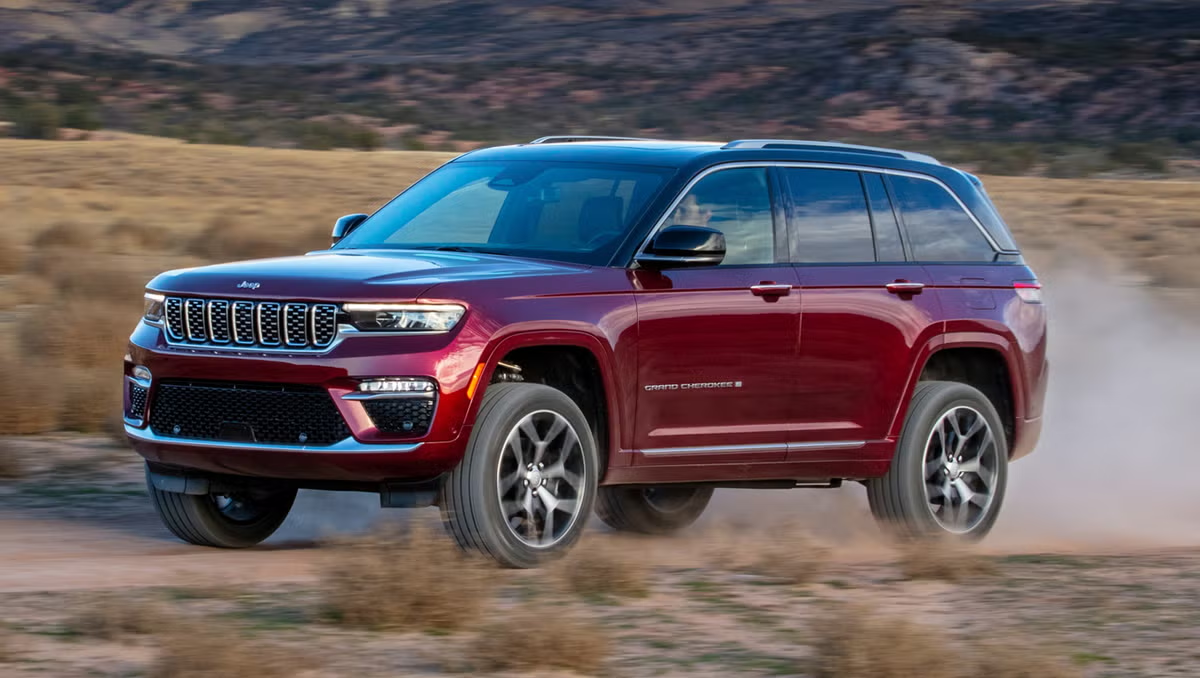The transmission is one of the most critical components in any vehicle, responsible for transferring power from the engine to the wheels efficiently. Proper transmission maintenance plays a crucial role in vehicle longevity and performance.
However, not all transmissions are created equal when it comes to fluid maintenance. Some modern transmissions are designed with “lifetime fluid,” meaning the fluid is intended to last the life of the transmission without the need for regular changes. These designs aim to reduce maintenance costs and simplify ownership.
Conversely, other transmissions require frequent and regular servicing to keep them functioning properly. These transmissions depend on periodic fluid changes, filter replacements, and inspections to avoid costly damage.
Constant servicing may seem like an inconvenience, but it is often essential for transmissions with more complex mechanical designs or those exposed to harsher driving conditions.
This article explores both sides of the transmission maintenance spectrum: five vehicles equipped with transmissions featuring lifetime fluid and five vehicles whose transmissions demand constant servicing.
Understanding the difference between these two types of transmissions can help buyers and owners make informed decisions about maintenance schedules, costs, and vehicle longevity.
Whether you prefer minimal upkeep or don’t mind routine care, this guide breaks down the advantages and drawbacks of both transmission types.
Also Read: 5 Cars That Make Your Daily Commute Comfortable and 5 That Hurt Your Back
5 Transmissions With Lifetime Fluid
In recent years, automotive manufacturers have increasingly embraced the concept of “lifetime transmission fluid” as part of their design philosophy.
This approach is intended to reduce maintenance requirements and enhance convenience for vehicle owners.
Transmissions labeled as having lifetime fluid typically use advanced fluids that are engineered to resist breakdown, oxidation, and contamination over long periods, sometimes claimed to last 100,000 miles or more without replacement.
By eliminating or extending fluid change intervals, manufacturers aim to lower ownership costs and simplify routine vehicle upkeep.
However, it’s important to understand that “lifetime fluid” doesn’t always mean the fluid will literally last the entire lifespan of the vehicle under all conditions. Harsh driving environments, towing, and heavy stop-and-go traffic can still degrade the fluid prematurely.
But for typical daily driving and proper maintenance, these transmissions are designed to provide reliable performance without frequent fluid service.
The appeal of lifetime fluid transmissions is clear: they reduce the hassle of regular fluid changes, which can be costly and time-consuming.
For many drivers, this means fewer service visits and lower maintenance bills, which can be especially attractive for busy lifestyles.
That said, not all lifetime fluid transmissions are created equal. Some utilize more robust materials, tighter engineering tolerances, and sealed units to maintain fluid integrity.
Others rely on advanced synthetic fluids designed to resist wear and thermal breakdown. These innovations help extend service intervals but require careful quality control during manufacturing and repairs.
In this section, we will explore five popular vehicles equipped with transmissions that feature lifetime fluid. Each offers a unique example of how this technology is applied in real-world applications and what owners can expect in terms of maintenance and durability.
1. BMW 3 Series (F30 Generation, ZF 8-Speed Automatic)
The BMW 3 Series F30 generation (produced from 2012 to 2019) is equipped with the ZF 8HP automatic transmission in many of its variants, such as the 328i and 330i. This transmission is widely regarded for its smooth performance, fast gear changes, and reliability.
One of the major selling points of the ZF 8HP is its designation as a “lifetime fluid” transmission—BMW and ZF both state that under normal driving conditions, the transmission fluid does not need to be changed for the life of the vehicle.
The lifetime fluid philosophy stems from the high-performance synthetic transmission fluid used in the ZF 8HP. This fluid resists oxidation, maintains its viscosity under extreme temperatures, and protects internal components far longer than conventional fluids.
The transmission unit is also sealed tightly, minimizing contamination and reducing the risk of fluid degradation.
Owners are often drawn to the BMW 3 Series not only for its performance but also for the reduced maintenance that comes with the ZF 8-speed. In theory, no regular fluid changes are required, making it attractive for those who want a luxury car without the headache of frequent servicing.

However, experienced BMW enthusiasts and independent mechanics often caution that while the fluid may last 100,000 miles or more, it is not truly invincible.
Many owners opt to perform a proactive transmission fluid and filter service around the 60,000-80,000-mile mark, especially if the car is driven in heavy traffic or under high loads. Still, the service interval is far less frequent than in conventional transmissions.
This transmission has earned praise for both reliability and performance when paired with BMW’s turbocharged engines. Its “lifetime” designation adds convenience, although some owners still prefer to treat the term as flexible rather than absolute.
Overall, the ZF 8-speed in the F30 3 Series strikes a balance between low maintenance and premium driving dynamics.
2. Toyota Camry (8-Speed Direct Shift Automatic – Aisin UB80E)
The Toyota Camry, particularly the models equipped with the 8-speed Direct Shift automatic transmission (Aisin UB80E), is a prime example of a mainstream sedan utilizing a transmission marketed with lifetime fluid.
Introduced in the 2018 redesign, this transmission was engineered not only to improve efficiency and responsiveness but also to minimize service needs.
Toyota, in line with many modern manufacturers, specifies that the transmission fluid is “filled for life” under normal driving conditions.
This approach simplifies maintenance for the average owner. Most drivers won’t need to think about transmission fluid at all during the typical life cycle of the car, and Toyota’s reliability reputation further reinforces this peace of mind.
The UB80E transmission uses advanced synthetic low-viscosity fluid and a sealed system designed to reduce contamination and thermal degradation.
The Camry is aimed at a broad consumer base, including commuters, families, and fleet buyers—groups that value longevity and low cost of ownership. With minimal fluid service required, Toyota delivers on that promise.
Many Camry owners easily reach 150,000 miles without experiencing transmission issues or needing to change the fluid, particularly if they don’t engage in high-stress driving like towing or mountainous travel.

Still, independent Toyota mechanics often recommend a cautious approach. Despite the “lifetime” label, some suggest changing the fluid around 100,000 miles to prolong the life of the transmission and maintain smooth operation.
Fortunately, Toyota’s use of the Aisin-supplied transmission—known for durability and widespread use across other brands—means parts and expertise are readily available if ever needed.
In practical terms, the Camry’s Direct Shift 8-speed is one of the most reliable and low-maintenance transmissions in a volume-produced sedan.
It suits drivers looking for a dependable vehicle with minimal upkeep, and its lifetime fluid design aligns well with Toyota’s broader strategy of reducing ownership costs over time.
3. Mercedes-Benz E-Class (W213, 9G-Tronic Automatic Transmission)
The W213 generation of the Mercedes-Benz E-Class (introduced in 2016) uses the in-house developed 9G-Tronic automatic transmission—a 9-speed unit that exemplifies modern transmission engineering with a strong emphasis on efficiency, smoothness, and longevity.
Mercedes markets this transmission with lifetime fluid under normal operating conditions, contributing to its appeal among luxury buyers seeking reduced maintenance commitments.
The 9G-Tronic is designed to operate with a high-performance, low-friction synthetic fluid that offers long-term thermal stability and wear resistance.
Unlike older Mercedes automatics that often required fluid changes every 40,000 to 60,000 miles, the 9G-Tronic is engineered with sealed systems and fine-tuned internal components that significantly slow fluid contamination and degradation.
For many owners, this means never needing to service the transmission over the course of typical ownership.
This system is particularly beneficial in luxury sedans like the E-Class, where quiet operation and effortless acceleration are paramount. The 9G-Tronic’s wide gear ratio spread allows for low engine RPMs at cruising speeds, reducing wear on the transmission and further justifying the “lifetime” label.
Despite the manufacturer’s assurance, Mercedes-Benz technicians often encourage a transmission fluid and filter change around 75,000 to 90,000 miles, especially in regions with hot climates or for vehicles subjected to heavy commuting.
This isn’t because the fluid becomes dangerous at that mileage, but rather to preserve the buttery-smooth shifts that customers expect in a luxury vehicle.

From a cost and convenience standpoint, the W213 E-Class benefits greatly from this design philosophy. Owners don’t face frequent fluid checks or flushes, and for those leasing or trading in by the 100,000-mile mark, it’s a non-issue.
Additionally, Mercedes’s decision to develop this transmission in-house has ensured better integration with their powertrains and improved long-term performance compared to outsourced alternatives.
In summary, the 9G-Tronic-equipped E-Class offers premium comfort with minimal transmission upkeep—one of the key advantages for luxury car buyers looking for low-maintenance performance.
4. Honda Accord (10-Speed Automatic Transmission – 2.0T Models)
The Honda Accord, particularly in its 2.0-liter turbocharged variants starting from the 2018 model year, features a proprietary 10-speed automatic transmission that marks a significant leap in drivetrain technology for the brand.
Designed in-house by Honda, this transmission is notable not just for its impressive gear spread and efficiency, but also for its use of transmission fluid that is designated to last the life of the vehicle under standard operating conditions.
Honda’s engineering team developed this 10-speed unit with low-maintenance ownership in mind. It uses proprietary Honda automatic transmission fluid (ATF-Type 3.1) specifically formulated for long service life, optimal thermal stability, and minimal friction loss.
In typical Honda fashion, the transmission is integrated with the engine and drivetrain for peak reliability, smoothness, and reduced mechanical strain.
For most drivers who don’t regularly tow or face extreme driving conditions, the fluid is intended to remain effective throughout the vehicle’s usable life.
The benefits for consumers are clear: fewer maintenance visits, reduced long-term costs, and the assurance of driving a vehicle built with durability in mind.

This aligns well with Honda’s longstanding reputation for building reliable and economical vehicles that rarely surprise owners with unexpected issues.
That said, many independent Honda service experts recommend a proactive fluid change at around 80,000 to 100,000 miles—especially for those who drive in urban congestion or high heat.
This isn’t a contradiction to Honda’s “lifetime” language, but rather a conservative approach to keep the transmission shifting smoothly beyond the 150,000-mile mark.
Fortunately, since Honda fluid is widely available and not prohibitively expensive, optional servicing is relatively affordable if owners wish to go the extra mile.
The 10-speed Accord transmission is also praised for its responsiveness, with fast gear changes and smart gear selection logic.
It strikes a rare balance between performance and efficiency, all while minimizing upkeep. For drivers wanting worry-free transmission performance without added complexity, this Accord stands as a strong contender.
5. Audi A4 (B9 Generation – 7-Speed S Tronic Dual-Clutch Transmission)
The Audi A4 B9 generation, introduced in 2017, features the 7-speed S tronic dual-clutch transmission (DCT) in many of its models, especially the quattro variants.
While dual-clutch units are typically associated with higher maintenance requirements, Audi has engineered the S tronic with advanced long-life synthetic fluid and a sealed design, allowing it to fall under the “lifetime fluid” category for most standard usage cases.
The S tronic is a wet dual-clutch transmission, meaning the clutches are bathed in oil, which helps manage heat and prolongs component life. Audi specifies that under normal driving conditions, the fluid does not need to be changed over the vehicle’s lifetime.
This lifetime claim is rooted in both fluid formulation and improved hardware: the transmission is sealed to reduce the likelihood of contamination, and Audi’s fluid is resistant to oxidation, heat breakdown, and shearing under pressure.
For daily drivers and moderate mileage users, this translates to fewer service appointments and reduced long-term transmission costs—especially appealing in a European luxury car. It also reflects Audi’s push toward making premium vehicles easier to own by reducing ongoing maintenance.

That said, there’s a bit of nuance to the lifetime claim. Audi’s internal service documentation occasionally mentions a 120,000-mile service interval for certain driving environments or models, especially in extreme climates or under high loads.
Enthusiasts and independent Audi specialists frequently recommend fluid changes around 80,000–100,000 miles as preventative maintenance.
It’s not because the transmission fails without it, but because DCTs are sensitive to thermal cycles, and fresh fluid can extend smooth operation beyond 150,000 miles.
The A4’s S tronic earns praise for its rapid, seamless shifts and responsiveness—hallmarks of dual-clutch design.
Combining those performance benefits with the promise of reduced upkeep, it presents a strong case for drivers who want sporty, refined driving without regular servicing headaches. In the world of German engineering, it’s one of the more owner-friendly examples when it comes to long-term transmission care.
5 Transmissions That Need Constant Servicing
While many modern vehicles are advertised with “lifetime” transmission fluids, not all transmissions follow that hands-off approach. In fact, several popular models feature gearboxes that demand regular attention to ensure long-term reliability.
These are not necessarily flawed systems, but rather units that are either engineered for tight tolerances, exposed to higher operating stresses, or made with materials and designs that are more sensitive to fluid degradation. For owners of such vehicles, “set it and forget it” isn’t an option.
This section focuses on five vehicles equipped with transmissions known for requiring more frequent service intervals. These aren’t always niche or high-performance models—some are mainstream cars and SUVs that people drive daily.
What sets these transmissions apart is their dependence on timely fluid changes, filter replacements, and in some cases, software updates to maintain shift quality and avoid premature wear.
There are several reasons a transmission might need constant servicing. Some units use older torque converter designs that generate excess heat. Others rely on conventional or lower-tier synthetic fluids that break down faster.
Still, others may have been over-engineered to the point where exact fluid levels and quality are critical for function. Regardless of the cause, owners need to stay on top of maintenance schedules—or risk expensive repair bills down the line.
We’ll explore five examples of such transmissions, diving into what makes them service-intensive, how frequently they need attention, and what owners or potential buyers should expect.
This isn’t just about complexity—it’s about predictability and ownership experience. If you’re someone who prefers vehicles that you can drive without thinking much about the transmission, these might not be the best choices.
But for hands-on drivers or those willing to invest in preventative maintenance, these vehicles can still be reliable—with the right care.
1. Jeep Grand Cherokee (WK2 – 5-Speed and 8-Speed Automatic Transmissions)
The Jeep Grand Cherokee, especially the WK2 generation (2011–2021), is known for its rugged appeal and off-road versatility.
However, when it comes to transmission maintenance, this midsize SUV often requires more attention than the average driver might expect—particularly with the 5-speed automatic (W5A580) used in earlier models and even the more advanced 8-speed (ZF 8HP70/8HP45) units in later versions.
The 5-speed, derived from an older Mercedes-Benz design, is a durable unit but demands regular fluid and filter changes—ideally every 60,000 miles or sooner under heavy use. Jeep marketed this as a long-life transmission early on, but real-world data has proven otherwise.
Owners often report rough shifting, hesitation, and torque converter lock-up issues when maintenance is delayed.
The fluid used (ATF+4 or specific synthetic equivalents) breaks down relatively quickly under heat, especially in Grand Cherokees used for towing or in stop-and-go traffic.
When Jeep transitioned to the ZF 8-speed in later model years, many assumed maintenance would become easier. Unfortunately, while the ZF transmission is sophisticated and delivers smooth shifts and fuel efficiency, it’s still maintenance-sensitive.
Jeep’s adaptation of the ZF unit includes a sealed pan and integrated filter, requiring specialized tools and procedures to change the fluid—far from a simple DIY job.

Additionally, the fluid is expensive and highly specific (ZF Lifeguard 8), and over- or underfilling can result in harsh shifts or internal damage.
The 8-speed may be smoother and more refined, but it doesn’t eliminate the servicing demands.
Jeep technically lists fluid change intervals as “lifetime” under normal driving, but many dealerships and independent specialists now strongly recommend service every 60,000–70,000 miles.
Skipping it often leads to early failure of internal clutch packs or valve body problems—repairs that can easily cost $3,000 or more.
For Grand Cherokee owners, diligent service is the key to preserving the transmission’s health. Whether you own the older 5-speed or the newer 8-speed, fluid changes aren’t optional—they’re essential.
This SUV may be a workhorse on and off the road, but its transmission needs consistent care to stay that way.
2. Nissan Pathfinder (R52 – CVT Transmission)
The Nissan Pathfinder R52 generation (2013–2020) shifted from rugged, body-on-frame construction to a unibody platform with front-wheel drive roots—and along with that transition came the widespread use of Nissan’s Xtronic continuously variable transmission (CVT).
While CVTs offer smoother acceleration and better fuel economy, the Pathfinder’s CVT has developed a reputation for being one of the most service-sensitive transmissions in its segment.
Unlike traditional automatics with fixed gear sets, CVTs use a belt-and-pulley system that constantly adjusts to maintain optimal engine speed. This system relies heavily on fluid quality and consistency to function properly.
In the Pathfinder’s case, the CVT is filled with Nissan’s NS-3 fluid, a proprietary formulation that is both expensive and difficult to find outside of dealerships. More importantly, this transmission is extremely sensitive to fluid degradation.
Even slight contamination or overheating can lead to belt slippage, pressure loss, and ultimately, complete transmission failure.

Nissan initially advertised the CVT as a low-maintenance component, but real-world use—especially in hotter climates or with frequent stop-and-go driving—has shown the need for servicing roughly every 30,000 to 40,000 miles.
Many Pathfinder owners who delay fluid changes experience whining noises, jerky acceleration, or warning lights related to transmission temperature. If ignored, these symptoms often culminate in a full transmission replacement, which can cost $4,000 or more.
Adding to the difficulty, the CVT’s fluid level can’t be easily checked with a dipstick. It requires a scan tool and a specific temperature range to ensure the fluid is at the correct level—making even routine service a challenge for DIYers.
Additionally, the cooling systems in some early R52 models were undersized for the CVT, leading to frequent overheating and the infamous “CVT limp mode,” where the vehicle reduces power to prevent damage.
Given its delicate nature, the Pathfinder’s transmission demands constant vigilance. While it’s a capable family hauler with a smooth ride when everything works, the reality is that owners must treat the CVT like a high-maintenance component. For long-term reliability, routine fluid changes aren’t just recommended—they’re non-negotiable.
3. Ford Focus (2012–2016 – DPS6 PowerShift Dual-Clutch Transmission)
The 2012–2016 Ford Focus equipped with the DPS6 PowerShift transmission is one of the most notorious examples of a service-heavy transmission, despite being marketed as an automatic.
Technically a dual-clutch automated manual, this transmission was designed to deliver the fuel efficiency of a manual with the convenience of an automatic. However, the reality for many owners was frequent service visits, drivability issues, and high long-term costs.
The DPS6 is a dry dual-clutch system, meaning it lacks the cooling and lubrication benefits of a wet-clutch design. As a result, it is more prone to heat-related wear and contamination.
Early in its life cycle, the PowerShift gained a reputation for shuddering, harsh shifting, delayed engagement, and total failure.
Ford issued multiple technical service bulletins (TSBs) and even settled lawsuits over the problematic behavior, but the core issue lies in how sensitive the system is to fluid quality, software calibration, and clutch wear.
Servicing the DPS6 isn’t straightforward. It requires specialized fluids and software tools to reset adaptive learning after repairs.

The clutch packs themselves are considered wear items and often need replacement before 60,000 miles—sometimes even sooner in urban driving conditions.
Transmission control module (TCM) failures are also common, and while Ford extended the warranty on some components, many owners still faced expensive repairs after coverage ended.
Even when updated or repaired, the transmission needs ongoing recalibration, fluid top-offs, and clutch inspection. Many dealerships treat transmission software updates and TCM reflashes as routine service for these vehicles.
And because the DPS6 is not a conventional torque-converter automatic, symptoms of wear—such as jerkiness or slipping—are more noticeable and occur more frequently if maintenance is neglected.
Ford tried to modernize its compact lineup with this transmission, but the end result was a high-maintenance gearbox in a vehicle segment where owners expected simplicity and durability.
If you’re shopping for a used Focus from these years, factor in not only the purchase price but also the ongoing costs of maintaining the DPS6. Even with all updates applied, it remains one of the most service-sensitive transmissions in its class.
4. MINI Cooper (R56 – 2007–2013 with Aisin 6-Speed Automatic)
The second-generation MINI Cooper (R56), produced from 2007 to 2013, may be beloved for its go-kart-like handling and iconic styling, but its 6-speed automatic transmission—an Aisin-sourced unit—has become infamous for requiring regular servicing to avoid catastrophic failure.
While the transmission itself isn’t inherently flawed, its placement, cooling limitations, and fluid sensitivity make it a demanding component when it comes to maintenance.
MINI and BMW labeled the transmission fluid as “lifetime,” a claim that has not aged well in the eyes of many owners and independent mechanics.
In practice, neglecting regular fluid changes—ideally every 40,000 to 50,000 miles—leads to rough shifting, hesitation, and ultimately, internal damage.
Compounding the issue is the fact that BMW did not provide an easily accessible dipstick or simple drain-and-fill method for DIYers, making even basic fluid service complicated and expensive.
The transmission’s small sump capacity means the fluid works hard and heats up quickly, especially during spirited driving or urban stop-and-go traffic.
Over time, thermal degradation breaks down the fluid’s lubricating and cooling properties, resulting in increased wear on the valve body and solenoids.
When that happens, shift logic becomes erratic—owners report delayed gear engagement, hard upshifts, and inconsistent downshifting.

What makes matters worse is that once this transmission begins to show symptoms, the fix is rarely cheap. A full rebuild can cost between $3,500 and $5,000, and replacement units from the dealer are even more expensive.
Preventive maintenance can prolong the life of the gearbox, but it requires commitment. Because the transmission doesn’t come with a standard service schedule from MINI, many owners unknowingly run into issues before realizing fluid service is critical.
This transmission is also highly sensitive to the specific fluid used—only approved synthetic fluids should be used, and improper substitutes can do more harm than good.
Add to that the cramped engine bay of the R56 and the need for specialized tools to perform a proper fluid change, and it’s clear this is not a casual maintenance task.
In short, if you’re considering an R56 MINI Cooper with the Aisin automatic, be prepared for transmission servicing as part of your regular maintenance routine. It’s not a question of “if” but “when,” and those who neglect it may end up paying dearly.
5. Volkswagen Jetta (2011–2017 – 6-Speed DSG Transmission)
The Volkswagen Jetta models from 2011 through 2017 often came equipped with the 6-speed DSG (Direct Shift Gearbox), Volkswagen’s dual-clutch transmission technology designed to combine sporty shift performance with fuel efficiency.
While the DSG is praised for quick, smooth gear changes, it is notorious for requiring diligent maintenance to maintain reliability.
Unlike traditional automatics, the DSG uses two clutches—one for odd gears and one for even gears—allowing lightning-fast gear shifts without torque interruption.
However, this design depends heavily on the transmission fluid to lubricate and cool both clutches and the complex hydraulic system. Volkswagen officially recommends fluid and filter changes every 40,000 miles or so, which is more frequent than many automatics.
Failing to adhere to these service intervals can result in clutch wear, mechatronic unit malfunctions, and erratic shifting behavior such as hesitation, jerking, or failure to engage gears properly. Repairing or replacing the DSG transmission or its components is a costly affair, with repairs often running into thousands of dollars.

Additionally, Volkswagen’s DSGs from this era have a reputation for sensor failures and software glitches that can cause warning lights and limp mode.
Because the system is electronically controlled and requires specialized diagnostic tools, routine servicing and troubleshooting usually must be done at a dealer or specialized shop.
Another factor is the driving environment; stop-and-go urban traffic accelerates clutch wear, necessitating more frequent servicing. Owners who frequently tow or drive aggressively may find their transmission life shortened without proactive maintenance.
Despite these caveats, the DSG is a popular transmission for those seeking a sporty driving experience combined with decent efficiency. But buyers and owners must accept that regular servicing and sometimes costly repairs are part of the ownership experience with this transmission.
Understanding transmission maintenance requirements is essential for any vehicle owner aiming to balance performance, reliability, and repair costs.
In this discussion, we’ve examined two distinct categories of transmissions—those with lifetime fluid claims that generally need minimal servicing, and those that demand constant attention to remain reliable.
Focusing on the latter, the five transmissions we covered illustrate why “set it and forget it” is often a misconception.
From the Jeep Grand Cherokee’s older 5-speed and newer 8-speed automatics to the Nissan Pathfinder’s sensitive CVT, these transmissions share one common trait: they require diligent fluid changes, filter replacements, or software updates at relatively short intervals to avoid costly damage.
Similarly, the Ford Focus DPS6 dual-clutch, MINI Cooper’s Aisin 6-speed, and Volkswagen Jetta’s DSG all demand specialized maintenance that often exceeds typical automatic transmission care.
Each of these vehicles, while offering benefits like smooth shifting, fuel efficiency, or sportier performance, comes with a trade-off—higher maintenance vigilance and potentially expensive repairs if ignored.
This reality underscores a critical point for owners and prospective buyers alike: transmissions are not created equal.
Some can endure hundreds of thousands of miles with little intervention, while others need fluid replaced every 30,000 to 40,000 miles and careful monitoring to avoid premature failure.
Additionally, the complexity and design of modern transmissions—such as dual-clutch units and CVTs—often mean maintenance is not easily done at home, necessitating dealer or specialized shop visits with costly parts and fluids.
Ultimately, the takeaway is that choosing a vehicle with a transmission that fits your lifestyle and maintenance willingness is crucial.
For drivers who prefer less frequent upkeep and lower repair risks, cars with transmissions labeled as “lifetime fluid” but proven to be robust may be the best option.
For enthusiasts or owners who don’t mind staying on top of scheduled service, vehicles with service-intensive transmissions can deliver rewarding driving experiences—if maintained properly.
Being informed and proactive with transmission care can prevent unexpected breakdowns and expensive repairs, preserving both vehicle value and driving enjoyment over the long term.
Also Read: 5 Cars That Make Your Daily Commute Comfortable and 5 That Hurt Your Back

